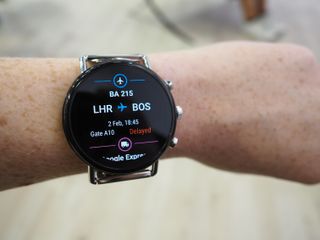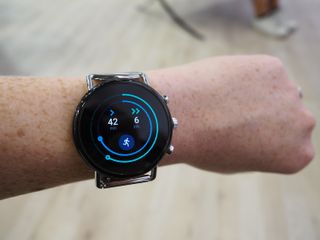Exclusive: Google Confirms No Pixel Watch This Year
The company is focused on Wear OS upgrades and working with smartwatch makers.
Updated 5:42 pm ET with additional confirmation.
BERLIN — Google won’t release its own smartwatch this year, despite months of rumors to the contrary, the company confirmed to Tom’s Guide on Aug. 31 in an interview and then separately in a phone call.

Instead, Google will focus on improving Wear OS and working with smartwatch makers, including Fossil, Casio and others showing off new Wear OS watches this week at IFA.
Speculation about a Pixel Watch, which would be Google’s version of the ideal Wear OS smartwatch, has run rampant in recent months, with many wondering if the Wear OS upgrade announcement at IFA this week was a signal that the company is gearing up for a smartwatch reveal at its October hardware event.
Miles Barr, Google's director of engineering for Wear OS, said Friday during an interview that Google has no plans to release a smartwatch this year.
“To think of a one-size-fits-all watch, I don’t think we’re there yet,” Barr said. “Our focus is on our partners for now.”
MORE: Best Smartwatch - Top-Rated Watches for iPhone, Android
Sign up to get the BEST of Tom's Guide direct to your inbox.
Here at Tom’s Guide our expert editors are committed to bringing you the best news, reviews and guides to help you stay informed and ahead of the curve!
Following our interview, we reached out to Google and a PR representative confirmed that the company would not be releasing a watch of its own this year.
For now, Google works with companies who make Wear OS devices to approve designs and suggest new features, and will continue to do so for the foreseeable future rather than make its own watch. The reason you’re seeing a slew of new Android watches with heart rate sensors and NFC chips? Google saw what smartwatch buyers were looking for and advised Wear OS device makers to add those features.
But the company doesn’t want to develop its own hardware — at least not yet — because there isn’t one perfect watch for every person, Barr said. Some watches are aimed at fitness enthusiasts, while others are focused more on design. Few watches nail the combination of the two.
Google hasn’t quite dreamed up a smartwatch that could be all things to all people (or even most things to most people). But Barr hinted at what his ideal Pixel Watch could include.
“Our Google Pixel line of phones is the best experience and Google’s take on it, so I imagine we would focus heavily on the [Google] Assistant to integrate AI and machine learning into the device, which is Google’s forte,” Barr said.
What’s Next for Wear OS
Google Assistant is at the forefront of the Wear OS software update rolling out to watches in the next month, with a proactive screen that displays the information you need for the upcoming day, week or even month, depending on how you use Google Assistant and what information Google learns from your usage of its other services.

For instance, a flight you’re taking next week would show up in the proactive glance, which is accessible by swiping right on the watch face. Google could learn about that flight from a trip confirmation in Gmail. The company is focused on making that experience even better, as well as adding useful fitness features, such as glanceable workout rings so you can see your activity progress for the day, automatic workout-tracking and new ways to measure your fitness rather than the 10,000-step goal that doesn’t mean much.
MORE: The 37 Best Things Google Assistant Can Do
Google is fixing a lot of the problems I’ve had with Wear OS watches with the proactive glance and easily accessible fitness features, which are all just a swipe away in the software update rolling out soon. But the biggest problem is performance: Many Android watches are built around a 2-year-old processor that often lags when accessing information or opening an app.
The Wear OS update works to solve performance issues with quick-glance screens, so you don’t have to dig into the app menu to open Google Fit, for example. Now it’s just a swipe away.
The next big project for Google is improving smartwatch battery life. Another software upgrade early next year will address that, Barr said, using many of the same strategies Google relies on to optimize battery life for Android phones.
"The doze mode, like in Android, will power things down when the watch is less active, when you’re interacting with it less,” Barr said. “The most extreme example is when I take it off and it powers down the radios and things like that, which lowers the power consumption. It will turn off the screen. Similarly to how in main Android, [we’re] using machine learning to optimize when it runs different processes to minimize power usage.”
Don’t consider the feature-packed upgrade Wear OS 3.0, though.
“We want to move away from version numbers,” Barr said. “Version numbers led us into a trap where we can only update once a year. Wear OS experience is evolving, and this is the start of that evolution. We want to keep rolling out improvements on a regular basis so users aren’t pent up waiting.”
Caitlin is a Senior editor for Gizmodo. She has also worked on Tom's Guide, Macworld, PCWorld and the Las Vegas Review-Journal. When she's not testing out the latest devices, you can find her running around the streets of Los Angeles, putting in morning miles or searching for the best tacos.
